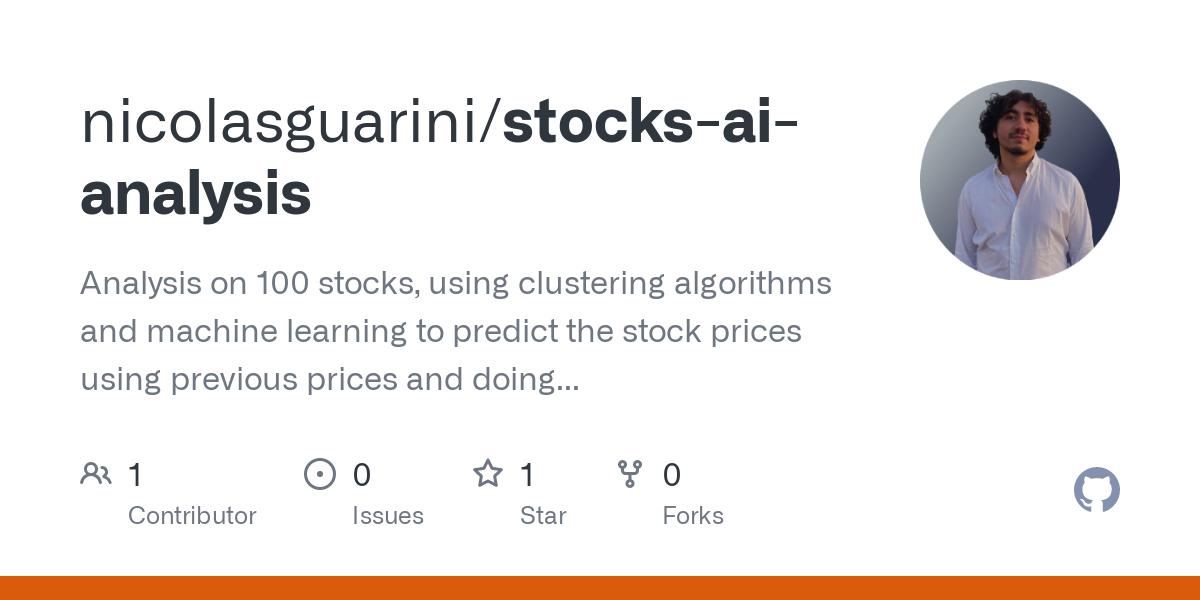20 New Ideas For Picking Ai Stock Market Sites
20 New Ideas For Picking Ai Stock Market Sites
Blog Article
Top 10 Tips On Assessing The User Interface And Experience Ai Software For Predicting And Analysing Trading Stocks
The User Interface and the User Experience of AI trading platforms that use analysis and prediction of stocks are crucial for ensuring efficiency and usability. They also contribute to the overall satisfaction. An undesigned user interface may hinder decisions even if the AI models that underlie it are highly efficient. Here are the top 10 tips to evaluate UX/UI.
1. Assess the sensitivity of your intuition and ease of Utilization
Navigation: Make sure that the platform is easy to use, using buttons and menus that are easy to understand as well as workflows.
Learning curve - Determine how fast a user can grasp the platform and grasp it without extensive training.
Verify consistency in designs across different platforms (e.g. buttons, color schemes).
2. Look for Customizability
Dashboard customization - Make sure that dashboards are customizable by users with pertinent charts, metrics and data.
Layout flexibility is crucial It is important to be able to change the layout and size of charts or widgets as well as tables.
Themes and preference. Find out if there are dark/light options or other preferences in the visual.
3. Assess Data Visualization
Quality of the chart: Ensure that the site provides interactive charts with high quality (e.g. candlestick charts, lines charts, etc.)) that include zoom and pan functions.
Visual clarity: Make sure that the data is presented clearly and is labeled appropriately as well as legends and tooltips.
Real-time updates: Check if visualizations change in real time to reflect market fluctuations.
4. Test Responsiveness and Speed
Loading Times: Make sure that the platform loads fast even when you're managing large amounts of data.
Performance in real-time: Verify that the platform is able to handle data feeds in real-time without lags or delays.
Cross-device Compatibility: Check if the application works with various gadgets (desktops or mobiles).
5. Evaluate the accessibility
Mobile app: Find out whether there's a complete mobile application that allows trading on the move.
Keyboard shortcuts: Ensure the platform supports keyboard shortcuts to advanced users.
Accessibility Features: Determine if the platform is compliant with accessibility standards.
6. Search and Filter Test Functionality
Search efficiency: The platform should enable users to search quickly for indexes, stocks as well as other investments.
Advanced filters: See if you can narrow down your results by applying filters (e.g. sector markets capital, sector metrics).
Saved searches: Check whether the platform permits users to save frequently used searches or filters.
7. Check for alerts and notifications
Individually customizable alerts: Users may create alerts based on specific situations, such as price thresholds and spikes in volume and news developments.
Delivery of notifications: See whether alerts are delivered via different channels (e.g. email, SMS and app notifications).
Timeliness: Make sure that alerts are activated quickly and accurately.
8. Evaluation of Integration with Other Software
Broker integration: Make sure the platform is integrated seamlessly with your brokerage account to allow ease of trading execution.
API access. Find out if the platform offers API access to advanced users to create custom tools and workflows.
Third-party integrations: Check whether the platform allows integrations with other software (e.g., Excel, Google Sheets and trading bots).
9. Assessment Help and Support Features
Onboarding Tutorials: Find out whether your platform has tutorials or guides for novice users.
Help center: Make sure the platform has a complete knowledge base or help center.
Customer support: Find out whether you have a fast customer service (e.g. live chat, email or phone).
10. Test Overall User Experience
User feedback: Use reviews and testimonials of users to determine their overall satisfaction with the platform's UI/UX.
Trial period - Test the platform with a no-cost trial to test what it can do.
Error handling: Verify how the platform deals with edge cases or errors (e.g. insufficient inputs and server downtime).
Bonus Tips
Aesthetics: While functionality is key aesthetics are important, a pleasing design can improve the overall experience for users.
Performance under pressure: Test your platform in high-volatility markets to ensure it's responsive and stable.
Forums and community: See whether the platform has an active user community or forum where users can provide feedback and share tips.
Following these tips can aid you in evaluating the user interface and UX of the AI trading platforms that predict and analyze stocks, making sure they are user friendly efficient and in tune with your trading needs. A well-designed UI/UX can help you make better decisions and manage your trades more effectively. Follow the most popular basics on ai for investing for more tips including ai stock picks, ai stocks, trade ai, incite, ai stock picks, ai stock trading, ai stock trading app, stock ai, ai stock trading bot free, ai copyright trading bot and more.
Top 10 Ways To Evaluate The Regulatory Compliance Of Ai Stock Predictive/Analytical Platforms
Regulation compliance is an important element to evaluate AI-based trading platforms. Compliance is crucial because it ensures the platform is in compliance with rules and legal frameworks. It also safeguards users' data. Here are the 10 best suggestions for evaluating the regulatory compliance of these platforms:
1. Verify that you have a valid license and registered
The regulatory bodies: Make sure that the platform is registered and licensed by the relevant financial regulatory authority (e.g. SEC, FCA, ASIC, etc.) in your country.
Verify the broker relationship If your platform is integrated with brokers or brokers, make sure that these brokers are licensed and regulated.
Public records: You can check the official website of the regulatory body to see whether the platform has been registered and if there has been any violations in the past.
2. Compliance with Data Privacy Assessment
GDPR - If your site operates within the EU and/or provides services to users in the EU ensure that it is compliant with GDPR.
CCPA -- California Consumer Privacy Act: Verify compliance for California users.
Policy on handling data: Ensure you review the platform's privacy policies to learn the way in which user data is stored and collected.
3. Assess Anti-Money-Laundering (AML) Actions
AML policies: Make sure that your platform is equipped with a robust AML policy to identify and prevent any money laundering.
KYC procedures: Check if the platform uses Know Your Customer (KYC) that verifies the identity of users.
Review the platform's transaction monitoring. Does it keep track of transactions and report suspicious activity to the authorities?
4. Make sure you are in the compliance of Trading Regulations
Market manipulation: Make sure that the platform has safeguards put in place to protect against market manipulations, such as the spoofing of trading and wash trading.
Types of orders: Make sure that the website is compliant with rules regarding order types.
Best execution : Ensure that the platform uses best execution techniques to complete trades at the most competitive price.
5. Cybersecurity Assessment
Data encryption: Make sure the platform protects data during the transfer process and in rest with encryption.
Response to incidents. Verify that there is clearly identified incident response plan for the platform for cyberattacks as well as data breaches.
Certifications: Check if the platform has cybersecurity certifications.
6. Transparency & Disclosure:
Fee disclosure - Ensure that all fees are revealed, including hidden or additional charges.
Risk disclosure: Verify if the platform offers explicit risk disclosures, particularly for high-risk or leveraged trading strategies.
Performance reporting - Check to see if there are precise and transparent reports on performance provided by the platform for its AI models.
7. Verify that you are in compliance with International Regulations
Trading cross-border: If you want to conduct international trade, ensure that the platform complies in all jurisdictions.
Tax reporting: Check if a platform has tools or reports to allow users to adhere to tax laws.
Respect for international sanctions: Ensure that the platform strictly adheres to these regulations and doesn't permit trading between countries or entities that are banned.
8. Review Record-Keeping, Audit Trails
Records of transactions: The platform needs to maintain detailed records on every transaction that is used for regulatory and auditor reasons.
Logs of user activities Make sure your platform records all activity by users, including transactions, logins, as well as adjustments to settings for accounts.
Audit readiness: Verify that the platform is able to provide all documentation and logs if a regulatory audit occurs.
9. Examine compliance with AI-specific Regulations
Algorithmic trading rules: If the trading platform uses algorithms, ensure that it complies with the regulations of MiFID II for Europe or Reg. SCI for the U.S.
Fairness and Bias: Make sure that the platform monitors, and mitigates, biases within its AI models to guarantee fair trade.
Explainability: Ensure that the platform has clear explanations of AI-driven predictions and decision making as required by certain laws.
10. Review feedback from users and review the regulatory history
User reviews: Research user feedback to gauge the reputation of the platform's regulator conformity.
Examine the regulatory history to see if there were any fines or penalties for violation of regulations.
Third-party audits: Verify whether the platform is subject to regular audits by third parties to ensure compliance with regulations.
Bonus Tips:
Legal consultation: Contact an expert on the subject to determine whether your platform is in compliance with laws.
Trial period. Try the trial or demo of the platform to test the compliance features of the platform.
Support for customers: Make sure the platform offers support in case of questions or problems with respect to compliance.
Utilizing these suggestions you can identify the level of compliance with regulations between AI stock trading platforms. This will enable you to select a platform that is operating within the legal framework that will protect your interests. Compliance reduces legal risk and builds trust on the platform. View the top trading chart ai for blog recommendations including coincheckup, ai investing, ai trading tools, ai trading, trader ai app, best stock analysis app, ai trader, ai for stock trading, stocks ai, ai hedge fund outperforms market and more.